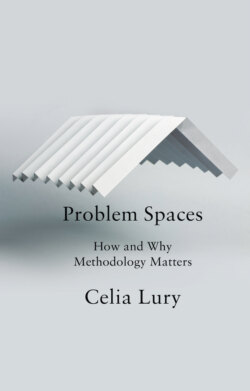Читать книгу Problem Spaces - Celia Lury - Страница 12
Notes
Оглавление1 This approach is thus very different from what has been called solutionism (Morozov 2013), in which problems are identified in relation to solutions that are already available. However, it has similarities with the consideration of problems as wicked (Rittel and Webber 1973; Buchanan 1992). In this approach, problems are wicked because they are indeterminate; that is, they have no definitive conditions or limits. Problem definition is considered a design space just as the solution is, with progress towards a solution affecting the progress of defining the problem. There are no inherent stopping criteria. This understanding of wicked problems has many affinities with the analysis of problem spaces proposed here. However, the emphasis here is on methodology rather than design as such. This is to enable a more open-ended discussion of the issues involved. Perhaps most importantly, however, the focus on problem spaces, rather than problems, even if they are qualified as wicked, draws attention to how problems are made, their becoming, rather than seeing them as having inherent characteristics. 2 Drawing on Whitehead, both Bruno Latour (2010) and Isabelle Stengers (2010) also use the term composition in relation to issues of methodology and politics. While sympathetic to these approaches, my use has a more strongly aesthetic emphasis, indicated by the discussion of form. 3 I hope to avoid the charge of formalism: the understanding of form proposed here is a dynamic social category; that is, it is a modality of social making. 4 I would like to thank Emma Uprichard for this formulation. 5 Roy Wagner says, ‘time is the difference between itself and space; space is the similarity between the two. Hence (pace Einstein) the nature of perception itself forbids a conflation of space and time as a single continuum’ (2019: xiii). 6 Compare with the definition given by Edwards et al.: ‘knowledge infrastructures comprise robust networks of people, artifacts, and institutions that generate, share and maintain specific knowledge about the human and natural worlds’ (2010: 17; see also: http://pne.people.si.umich.edu/PDF/Edwards_etal_2013_Knowledge_Infrastructures.pdf). Bowker defines knowledge infrastructures as: ‘the network of institutions, people, buildings and information resources which enable us to turn observation and contemplation of the world into a standardized set of knowledge objects: journal articles and monographs’ (2016: 391). 7 In most early uses of the term in the humanities and social sciences, infrastructure was used to refer to whatever assemblage of technologies, procedures, and people (hardware, software and people) was robust, stable or solid enough to facilitate a set of organized practices, but the recognition of the mutability of such assemblages has been gradually built into the working definition. There is now a concern with the doing of infrastructures; that is, with infrastructuring as a material-semiotic practice (Bossen and Markussen 2010; Simone 2015; Michael 2020). 8 Law, Ruppert and Savage (2011) describe this understanding of methods – that is, methods as tools – as ‘the methodological complex’ (presumably in an analogy to the ‘patriarchal- military- capitalist complex’) or ‘the methods machine’. The problem with such an approach they say is the separation it introduces and enforces between theory, substance, and method.
